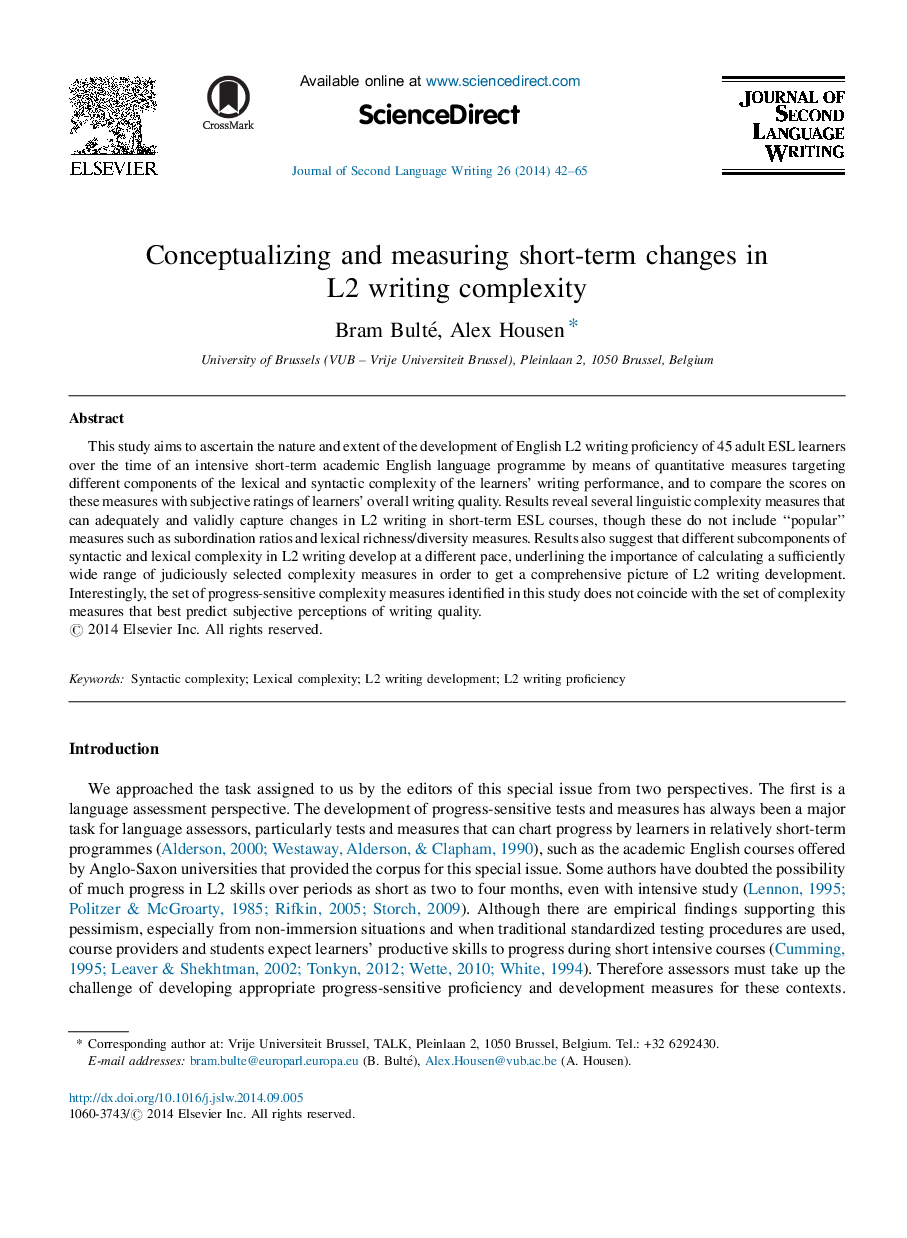| Article ID | Journal | Published Year | Pages | File Type |
|---|---|---|---|---|
| 363995 | Journal of Second Language Writing | 2014 | 24 Pages |
•Examines utility of the complexity construct for studying L2 writing development.•Uses quantitative measures to study L2 writing complexity development in short-term ESL course.•Different subcomponents of complexity in L2 writing develop at different pace.•Compares objective complexity measures to subjective ratings of L2 writing quality.•Progress-sensitive complexity measures do not coincide with predictors of writing quality ratings.
This study aims to ascertain the nature and extent of the development of English L2 writing proficiency of 45 adult ESL learners over the time of an intensive short-term academic English language programme by means of quantitative measures targeting different components of the lexical and syntactic complexity of the learners’ writing performance, and to compare the scores on these measures with subjective ratings of learners’ overall writing quality. Results reveal several linguistic complexity measures that can adequately and validly capture changes in L2 writing in short-term ESL courses, though these do not include “popular” measures such as subordination ratios and lexical richness/diversity measures. Results also suggest that different subcomponents of syntactic and lexical complexity in L2 writing develop at a different pace, underlining the importance of calculating a sufficiently wide range of judiciously selected complexity measures in order to get a comprehensive picture of L2 writing development. Interestingly, the set of progress-sensitive complexity measures identified in this study does not coincide with the set of complexity measures that best predict subjective perceptions of writing quality.
